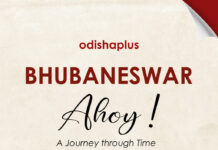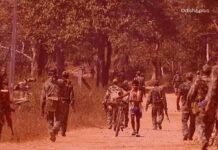Rashmi Rekha Das

Contribution of literature to the freedom struggle of India is remarkable. When it comes to Odisha litterateurs’ contribution, writers like Utkalamani Gopabandhu Das, Vyasa Kabi Fakir Mohan Senapati, Prakruti Kabi Gangadhar Meher, Utkal Gourab Madhusudan Das, Kabibara Radhanath Ray, Nilakantha Das, Godabarisha Mishra, Kantakabi Lakshmikanta Mohapatra and Jnanpith award winner Sachi Routray used literature as a weapon against the brutal British rule to encourage people to fight against British Empire for India. In short, they used literature to spread the message of patriotism.
The ongoing World Odia Language Conference (WOLC) paid tribute to such writers who sacrificed their lives for the sake of nation. Yes, writers with great powers of imagination and literary talent dedicated their work for the freedom of the motherland and gave shape to revolutionary visions.
Also, there are many firings such Amko Simko firing, Janhapada firing, Papdahandi firing and Eram firing which played a pivotal role in the freedom movement. These incidents outraged Odisha people and led to a widespread movement of nonviolent civil disobedience led by Mahatma Gandhi. These incidents and literary works of patriotic writers had inspired and encouraged people of Odisha to fully participate in the freedom struggle and fight against the oppressive rule of the Britishers.

In a bid to aware people about the role of literature in freedom movement, WOLC brings the list of freedom fighters whose revolutionary writings inspired youth to take part in freedom struggle in large number. That apart, WOLC has come up with posters of major firing incidents held in Odisha as part of freedom movement.
“Mishu Mora Deha E Desha Matire
Deshabasi Chalijantu Mo Pithire,
Desha Ra Swarajya Pathe Jete Gada
Puru Tahin Padi Mora Mansa Hada.”
These immortal lines penned by Utkal Mani Gopabandhu Das reflect the poet’s unending love for his motherland. When Gopabandhu was in Hazaribagh jail between 1922 and 1924, he had written the novel Bandira Atmakatha and the lines translated mean “Let my body mingle in the dust of my motherland and let my countrymen walk on it; let my flesh and bones fill in the potholes of my country’s self-independence”.
Apart from paying tribute to of Utkalmani Gopabandhu Das, Utkal Gaurab Madhusudan Das, Buxi Jagabandhu among others, OWLC has also remembered women freedom fighters such as Sobhabati Panda, Malati Choudhury, Prabhabati Devi, Rama Devi, Sarala Devi and Jambubati Devi who played an important role in Quit India Movement with pride.
WOLC remembers forgotten chapters of our freedom struggle, many of them might be unknown to the new generation. These unforgettable chapters will serve as a medium of inspiration and encouragement for the coming generations for sure.

Amko Simko firing
Amko and Simko were two villages in Sundargarh district where tribal were aggrieved with the king for his oppressive rule. They had gathered under the leadership of Nirmal Munda on April 25, 1939 to have words with his representatives. They were interrupted by a group of police who opened fire at tribal killing 28 persons on the spot. This firing had created a stir all over the country.
Janhapada firing
The princely state of Dhenkanal was politically very sensitive like other places where agitations against British rule were taking place. Madhi presently known as Kamakhya Nagar was no exception. As many as 19 freedom fighters under the leadership of Baishnab Charan Patnaik raised their voice against British rule. Armed with arrows and bows, they attacked the British armory and the treasury. Two freedom fighters were gunned down by police while Patnaik managed to escape the scene. As many as four persons were arrested in this connection and sentenced to death. Later, sentence was commuted to life imprisonment.
Bazalgette murder
Residents of Ranpur and the adjoining princely states of Nayagarh and Dasapalla had played a pivotal role in freedom struggle. In 1939, the political agent of Odisha states Major RL Bazalgette was on a tour to Ranpur to assess the impact of Prajamandal movement. When rumour of Bazalgette killing four patriots spread like wildfire, locals under the leadership of Raghunath Mohanty and Dibakar Parida became violent and attacked Bazalgette. The incident took place when Bazalgette was on his way home after meeting the Dhenkanal King. Raghunath and Dibakar were arrested and executed on April 4, 1941.

Eram firing
Eram firing incident is a glorious chapter in the Indian freedom movement. Also known as the Rakta Tirtha (a place of pilgrimage tinged with the blood of the martyrs),Eram is located near Basudevpur in Bhadrak district. It was centre of freedom struggle during Quit India Movement in 1942. The Imperial police had opened fire on a gathering of freedom fighters here on September 28, 1942 when they were protesting against the foreign rule peacefully. As many as 29 people fell to the police bullets while 56 more were wounded in one of the worst ever mayhems perpetrated by the Colonial occupations.
The visitors say
Sneha Pati, a banker, said, “Literature played an important role in liberating our beloved country from the cruel clutches of the British rule. Actually literature awakened the people from slumber and inspired them to fight for their independence. This segment will help young generation make bond between literature and freedom struggle.”
“We are very much aware of Eram and Papadahandi firing incidents but have no idea about Janhapada firing, Amko Simko firing and Bazalgette murder. Thanks to the Odisha government, we came to know about such glorious chapters of freedom struggle,” said Class V student of Xavier High School Aradhya Das.






























Your insights are a beacon of light.